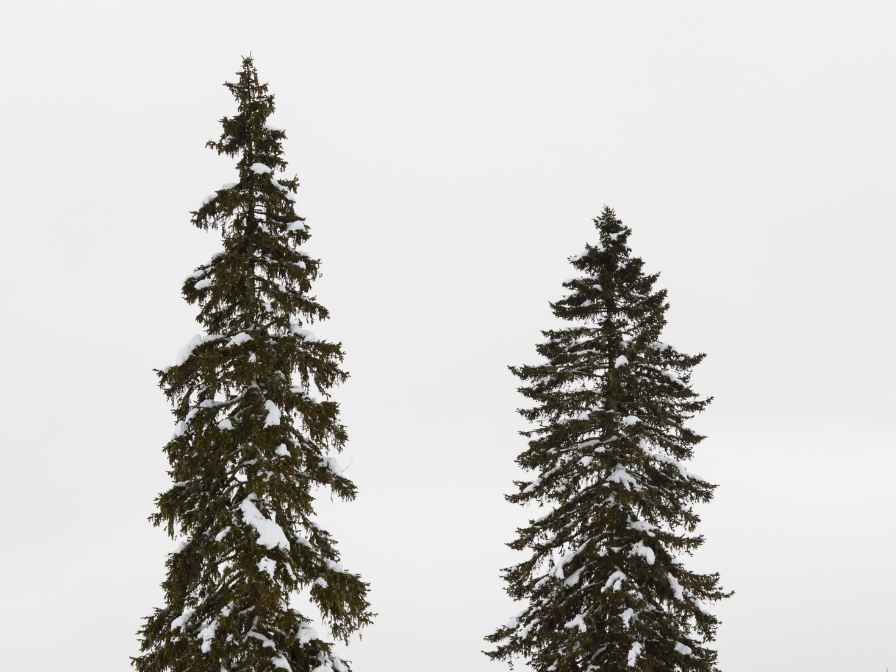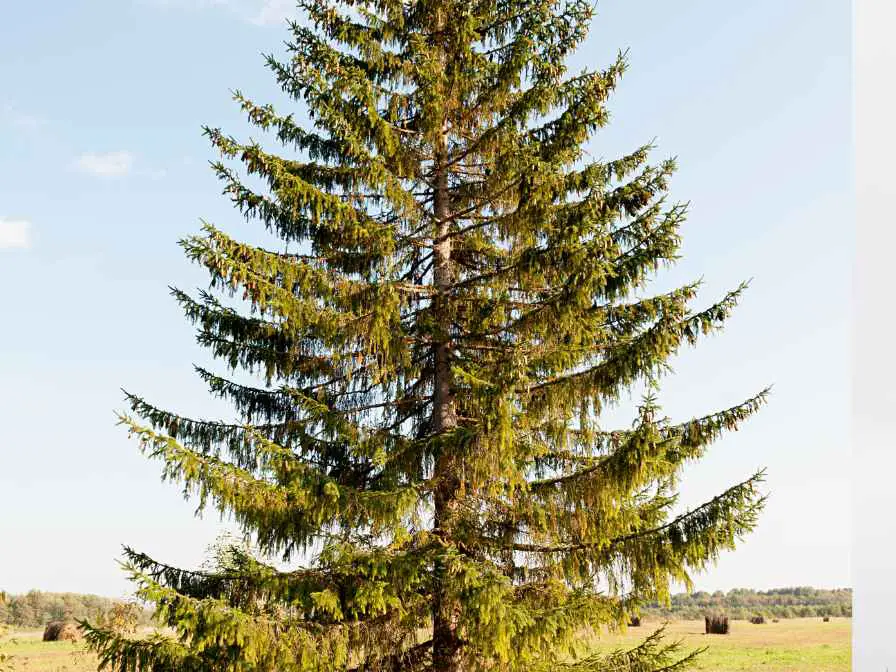Want to grow a beautiful, evergreen, and good-looking tree in your garden or at your homesteading setting? Well, you have got one. Yes, the black hill spruce tree is such an evergreen tree, looks very good when being present in the garden, and adds ornamental value as well.

It is a slow-growing tree, which takes time to grow. Sometimes it is also used as a Christmas tree as well. Many people want to know about it and want to try it. That’s why we are going to tell you how to grow a black hill spruce tree. It is quite easy but needs patience and concentration.
Black Hill Spruce Tree
The black hill spruce tree (Picea glauca var. densata), also known as the dense black hills spruce or the black hills white spruce, is the type of spruce tree that is found in the Black Hills region of South Dakota and Wyoming in the United States. It is a subspecies of the white spruce (Picea glauca) and is well-adapted to cold climates and harsh conditions.
The black hill spruce tree is a slow-growing evergreen tree that can reach heights of up to 60 feet (18 meters) and has a conical shape. The needles of the tree are short and stiff and are bluish-green. The tree also produces small cones that are about 2-4 inches (5-10 cm) in length.
The black hill spruce tree is commonly used in landscaping and as a Christmas tree due to its dense foliage and symmetrical shape. It is also a popular tree for windbreaks and erosion control due to its hardiness and ability to withstand harsh weather conditions.
Benefits of Growing Black Hill Spruce Tree
There are many benefits of planting a black hill spruce tree, besides adding the tree to the ecosystem of the environment. Here are some of the important ones as follows
Aesthetic value
The black hill spruce tree has a conical shape and dense foliage, making it an attractive tree for landscaping and as a Christmas tree. It can also add a natural element to any property. It looks good and as it is evergreen, it continuously adds aesthetic value to the environment.
Shade and Privacy
When mature, black hill spruce trees provide ample shade, which can help cool surrounding areas and reduce energy costs. The dense foliage also provides privacy, making it a good choice for hedgerows and windbreaks.
Erosion Control
The deep root system of black hill spruce trees can help stabilize soil and prevent erosion, making it a good choice for areas prone to erosion. In this way, you will not only get added beauty to the soil but also a great soil improvement.
Wildlife Habitat
The dense foliage of black hill spruce trees provides a habitat for birds and other wildlife, making it a valuable addition to any ecosystem. This wildlife might be beneficial for the garden, as it can help in pollination, as well as repelling harmful pests and insects away from the garden.
Air Quality
Trees release oxygen while absorbing carbon dioxide and other harmful pollutants in the air. Black hill spruce trees are no exception and can help improve the air quality of the surrounding area. It will make the air fresh in the garden.
Low Maintenance
Black hill spruce trees are hardy and require little maintenance once established. They are drought-tolerant and can withstand harsh weather conditions, making them a low-maintenance option for homeowners and landscapers.
Overall, planting black hill spruce trees can provide numerous benefits, both aesthetically and environmentally, and can be a valuable addition to any property. It can add value to the valuation of the property as well.
How to Grow Black Hill Spruce Tree?

As black hill spruce is quite a tree, it does need consideration to grow and plant it. It is because you are going to invest money, time, effort, and energy to make sure that it grows successfully. So, here are steps to follow to grow a black hill spruce tree
Choose the right planting location
Black hill spruce trees prefer well-drained soil and full sun to partial shade. Choose a location that has good drainage and receives at least 6 hours of sunlight per day. It can tolerate partial shady conditions, but then it will be not an ideal plant.
Prepare the planting site
Measure the root ball of the plant. the hole for the plantation should be twice as wide and deeper than the length of the root ball. Remove any grass or weeds from the planting area. Mix compost or other organic matter into the soil to improve drainage and fertility.
It can do well in loamy, clay, or sandy soil. Also, it can tolerate slightly alkaline soil. But it grows very well in slightly acidic soil. you can check the soil by doing a PH test and adding the needed nutrients. Make sure the soil has a well-drainage ability.
Plant the Tree
Place the black hill spruce tree in the planting hole and backfill it with soil. Make sure the tree is planted at the same depth as it was in the container. To remove any air pockets in the soil, gently tap the soil, especially near the stem of the plant.
Provide water to the plant
Water the tree thoroughly after planting and continue to water it regularly, especially during the first year of growth. The soil should be kept moist but not waterlogged. Excess water can cause root rot and you can end up losing the plant.
Mulching around the tree
Around the base, you need to place organic mulch. It will help trees retain moisture and suppress weeds. Place the mulch 2 to 3 feet away from the base to avoid rot. It will reduce your efforts in watering and taking care of these trees.
Taking care of the Black Hill Spruce Tree
Well, as it is a tree and it grows at a little slower pace, you need to have patience and take good care of it. It is not the case that you have to keep all span of attention towards it. But just make sure the minimum requirements are met. Here are some steps to follow:
Watering Requirements
Black hill spruce trees need regular watering, especially during the first few years of growth. Water deeply once a week, or more often during hot, dry weather, to keep the soil moist but not waterlogged.
Mulching requirements
Place the mulch near the base of the tree to retain moisture and suppress weeds. Keep the mulch a few inches away from the trunk to prevent moisture buildup that can lead to rot. This action will help in the good growth of the spruce plants.
Fertilizing Requirements
Fertilize the tree with a slow-release fertilizer in early spring. Follow the manufacturer’s instructions for application rates. It is good to add organic fertilizers to the black hill spruce trees. If you see any symptoms of nutrient deficiency, you can add fertilizers accordingly.
Pruning Requirements
Prune the tree to remove any damaged or diseased branches, and shape the tree as desired. Pruning should be done in the early spring or in the late winter when the plant starts growing. It will not only get the black hill spruce tree in shape, but also it will help in developing resistance to diseases.
Protecting from Pests
Black hill spruce trees can be vulnerable to pests such as aphids or spruce budworms. Monitor the tree regularly for signs of infestation, such as yellowing or browning needles, and treat with an insecticide if necessary.
Protecting from Extreme Weather
Black hill spruce trees are hardy but can be damaged by extreme weather conditions such as heavy snow loads or strong winds. Prune the tree to remove any weak or damaged branches, and use stakes or guy wires to provide support in windy areas.
Maintaining Soil health
Maintain soil health by adding compost or other organic matter to the soil. This will help improve drainage and fertility and promote healthy growth. In this way, you would be able to get a good black hill spruce tree and you will get a Christmas tree for an eve.
By following these tips, you can keep your black hill spruce tree healthy and strong for years to come. It will add ornamental value, as well as you will enjoy growing the black hill spruce tree.
In short, the black hill spruce tree is a dream tree of many gardeners, because of its beauty, appearance, and ease to care. The people with resources do prefer it for their gardens and yards. But, even if you have limited space, you can go for it. You just have to follow a specific set of instructions to make it successful.

